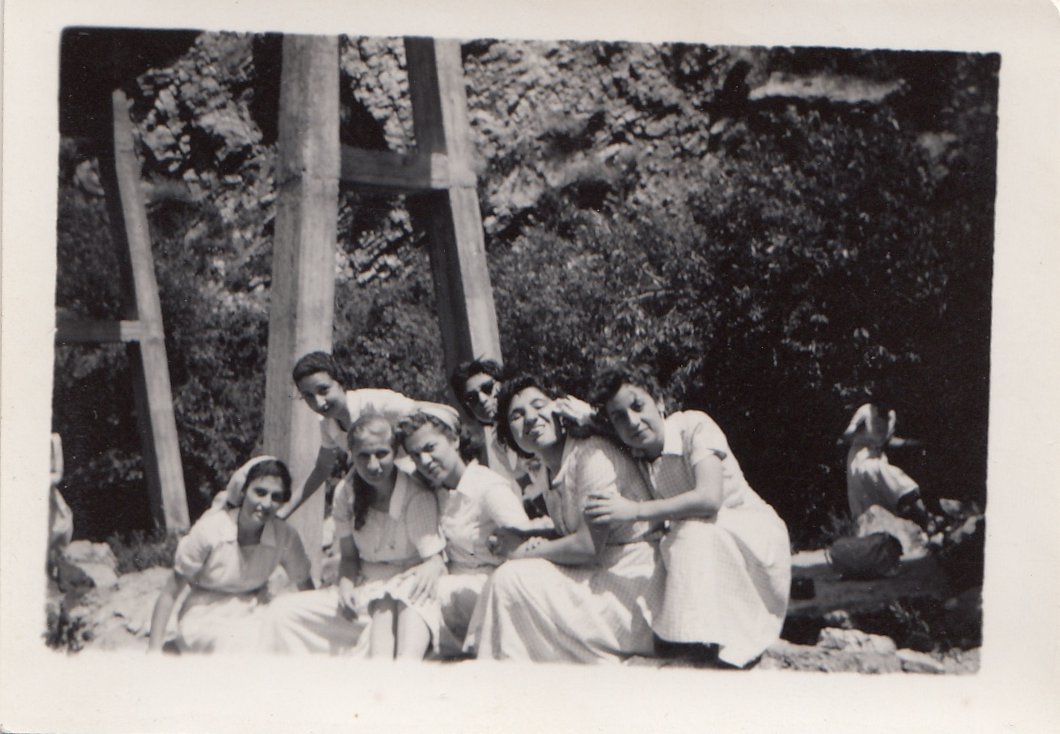
1950’s
-
In the aftermath of World War II, the 1950s marked a tense and transitional period for the Kurdish people, caught between rising nationalist aspirations and intensifying state repression. The collapse of the Republic of Mahabad in 1946 and the exile of Mullah Mustafa Barzani and his fighters to the Soviet Union cast a long shadow over Kurdish hopes in Iran and Iraq, while Cold War politics deepened the marginalization of stateless nations. In Iraq, Kurdish resistance simmered quietly under the monarchy, setting the stage for future conflict. In Turkey, the decade was shaped by harsh assimilation policies: Kurdish language and identity were officially denied, yet sustained in private spaces through oral tradition, music, and family memory. Across the region, Kurdish women emerged as cultural anchors, holding communities together through upheaval. They were poets, storytellers, midwives, and informal educators—figures whose contributions rarely entered official records but were central to the survival of Kurdish identity. In Iran and Syria, Kurds continued to face surveillance and displacement, but maintained networks of cultural preservation, with women often at the heart of this quiet resistance. Archival photographs from the 1950s—whether in the mountains, villages, or exilic urban spaces—capture Kurdish women with an enduring grace and strength, embodying resilience in a post-war world that offered little protection, but where Kurdish culture endured, largely through them.
Grandmother Sultan
-
A studio photo of beloved Grandmother Sultan from Elbistan region, Kayseri, Kurdistan.
-
Type
ImageFormat
JPEGDate
1950’sRights
The Jiyan ArchivesContributor
Zara AkpinarCreator
Nazlî and Sultan ArchivesDate Submitted
25/05/2025Identifier
img_0071
-
A photograph of Atiya Ibrahim Khan Sito Agha Oramari sat smoking her cigerette in Baghdad, Iraq.
-
Type
ImageFormat
JPEGDate
1950’sRights
The Jiyan ArchivesContributor
Peri Xan AkrawiCreator
Atiya Ibrahim Khan Sito Agha Oramari ArchivesDate Submitted
11/01/2022Identifier
img_0136
Atiya Ibrahim Khan Sito Agha Oramari
-
Two children named Kazhal and Araz are photographed in their traditional Kurdish clothes in Slemani, Kurdistan. This photo was taken in March, most likely around Newroz celebrations.
-
Type
ImageFormat
JPEGDate
1950’sRights
The Jiyan ArchivesContributor
Rozh Omar QaradaghiCreator
Kazhal Omar Qaradaghi ArchivesDate Submitted
16/04/2024Identifier
img_0110
Kazhal and Araz
A girls college trip to Lebanon
-
Sînemxan Bedirxan ( second from left) on an all-girls college trip to Lebanon via Syria.
-
Type
ImageFormat
JPEGDate
1950’sRights
The Jiyan ArchivesContributor
Raz XaidanCreator
Sinemxan Bedirxan ArchivesDate Submitted
23/06/2021Identifier
img_0006
A Garden capture in baghdad
-
Said Saddiq, Rewsen Bedirxan (middle) and her daughter, Sinemxan Bedirxan.
-
Type
ImageFormat
JPEGDate
1959Rights
The Jiyan ArchivesContributor
Raz XaidanCreator
Sinemxan Bedirxan ArchivesDate Submitted
23/06/2021Identifier
img_0008
-
Letter from the Ministry of Education in Damascus thanking Rewsen Bedirxan for her services to education.
-
Type
DocumentFormat
JPEGDate
1951Rights
The Jiyan ArchivesContributor
Raz XaidanCreator
Sinemxan Bedirxan ArchivesDate Submitted
23/06/2021Identifier
img_0011
With Thanks from the Ministry Of Education, Syria.
-
Sînemxan Bedirxan knitiing in Damascus, Syria.
-
Type
ImageFormat
JPEGDate
1950’sRights
The Jiyan ArchivesContributor
Raz XaidanCreator
Sinemxan Bedirxan ArchivesDate Submitted
23/06/2021Identifier
img_0015
Sînemxan Bedirxan knittiing
-
A note on the back of a photo of Sînemxan Bedirxan knitting was written to her husband, Salah Sadallah, a personal message from when he studied in England.
-
Type
ImageFormat
JPEGDate
1950’sRights
The Jiyan ArchivesContributor
Raz XaidanCreator
Sinemxan Bedirxan ArchivesDate Submitted
23/06/2021Identifier
img_0016
A photo note to a husband far away
the French school of girls trip to Lebanon
-
Sînemxan Bedirxan ( fourth from right) with her classmates at the all girls French school to Lebanon via Syria.
-
Type
ImageFormat
JPEGDate
21/03/1951Rights
The Jiyan ArchivesContributor
Raz XaidanCreator
Sinemxan Bedirxan ArchivesDate Submitted
23/06/2021Identifier
img_0019
-
Sînemxan Bedirxan with friendsduring a college trip to Lebanon.
-
Type
ImageFormat
JPEGDate
1959Rights
The Jiyan ArchivesContributor
Raz XaidanCreator
Sinemxan Bedirxan ArchivesDate Submitted
23/06/2021Identifier
img_0022
Sînemxan Bedirxan and College friends in Lebanon
-
Portrait of Xanim Bayîz, a Peshmerga of the communist party from Slemani.
-
Type
ImageFormat
JPEGDate
1950’sRights
The Jiyan ArchivesContributor
Rasa KamalCreator
Xanim Bayîz ArchivesDate Submitted
18/02/2022Identifier
img_0124
Portrait of Xanim Bayîz
-
Sînemxan Bedirxan knitting, on the back of this photo, she wrote to her husband, Salah Sadallah, a personal message while he studied in England.
-
Type
ImageFormat
JPEGDate
1950’sRights
The Jiyan ArchivesContributor
Raz XaidanCreator
Sinemxan Bedirxan ArchivesDate Submitted
23/06/2021Identifier
img_0017